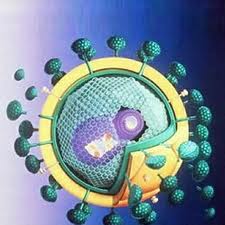Sexual transmitted diseases or infections otherwise known as STDs or STIs are bacterial and viral illnesses that are transmitted through sexual intercourse whether oral, anal or anything!!! I am sure that most teenagers of 14 yrs or older have heard about some of these terrifying symptoms. In fact do not be surprised if one of your friends actually have one of more forms of sexually transmitted diseases as surprisingly enough many teenagers are having unprotected and underage sexual contact. This in some countries may be illegal.
Cysts, tumours, blisters, ulcers, bleeding, yellow, brown, green discharges, decomposing tissues, the lists piles on. These are only the mild symptoms of some of the Sexually transmitted diseases. Ultimately, the infections result in not only pain but paralysis and death sets in if left unattended.
Below is the TOP THREE most common sexually transmitted diseases.
Herpes
Herpes is perhaps one of the most common and non-aggressive sexually transmitted disease. Herpes, other Herpes Genitalis is a viral infection of the genitals spread primarily through vaginal and oral sex without the use of any protective gear such as condoms or medicines. Herpes can also be spread through mouth to genital contact during oral sex. More than 1 in 10 Australian’s carry the virus responsible for genital herpes.
There are two types of herpes which cause small, painful blisters. One
mainly causes cold sores and is spread through kissing. The other mainly
causes genital sores and is spread through sexual contact. Some people show no signs of infection. Others suffer from painful
genital blisters, pain on passing urine, fever, swollen glands and
headaches. The first outbreak of blisters may be the worst, further
outbreaks are generally less frequent and less severe.
Condoms provide some protection, but only protect the skin that is covered. You should avoid having sex with someone who has blisters present as there is a high risk of being infected. There is no cure for genital herpes however there are medications that help manage outbreaks. Left untreated, the Herpes virus can cause meningitis, and exposed blisters can increase the risk of acquiring HIV. It is easy to test for Herpes, a swab is taken from an open blister.
Symptoms:
Male:
Small bumps, cysts-like blisters on the penis head. Watery pus may come out if popped. The blister will spread if you pop it and touch other parts of the body. Medicine are available to manage the symptoms and stop the spreading. Unfortunately, there are no cures for the disease.
Female:
For the females, the symptoms are the same. Abnormal growth on the opening of the vagina. Once popped, may be spreaded to other parts of the body and in serious cases, may spread into the cervix. Prolonged exposure to Herpes will result in HIV which is incurable for as least a few years.
 | HIV/ AIDS Being one of the most deadly and incurable disease in the world, the HIV and AIDS virus may not be what you think. The AIDS virus is ONLY transmittable through unprotected sex with a contaminated sexual organ. Therefore it is essential to be wearing a condom especially if the person you are having sexually contact with has a suspicious health history. The most common spreading of AIDS is through semen, blood and other body fluids. Although it is said that sexual contact and sharing needles are high risk activities, kissing and sharing a cup may also assist in the spreading of the virus. Treatment for AIDS is basically medicine which helps to slow the virus from dominating your body. Unfortunately,there would not be any vaccines likely for many years and research into the virus is not fully developed. Symptoms (BOTH SEX) The main symptoms for the AIDS virus is flu-like symptoms shortly after infection, then there would be no symptoms at all for as long as 10 years. The disease eventually breaks down the immune system resulting in the body being unable to fight illnesses such as the common cold and other naturally-occuring cancers such as Kaposi's Sarcoma. The cause of death for AIDS- infected patients is usually common infection as the body is unable to cure themselves. |
Gonorrhoea
Symptom:
Male:
The main symptoms for the male sex is a smelly discharge, swollen testicles that are red in appearance, pain when urinating and may cause infertility.
Female:
The main symptom for the female sex is a painful experience when urinating or having a period, a thick, yellowish smelly discharge oozing out of the vagina and redness around the opening of the vagina. May cause infertility and cervical cancer